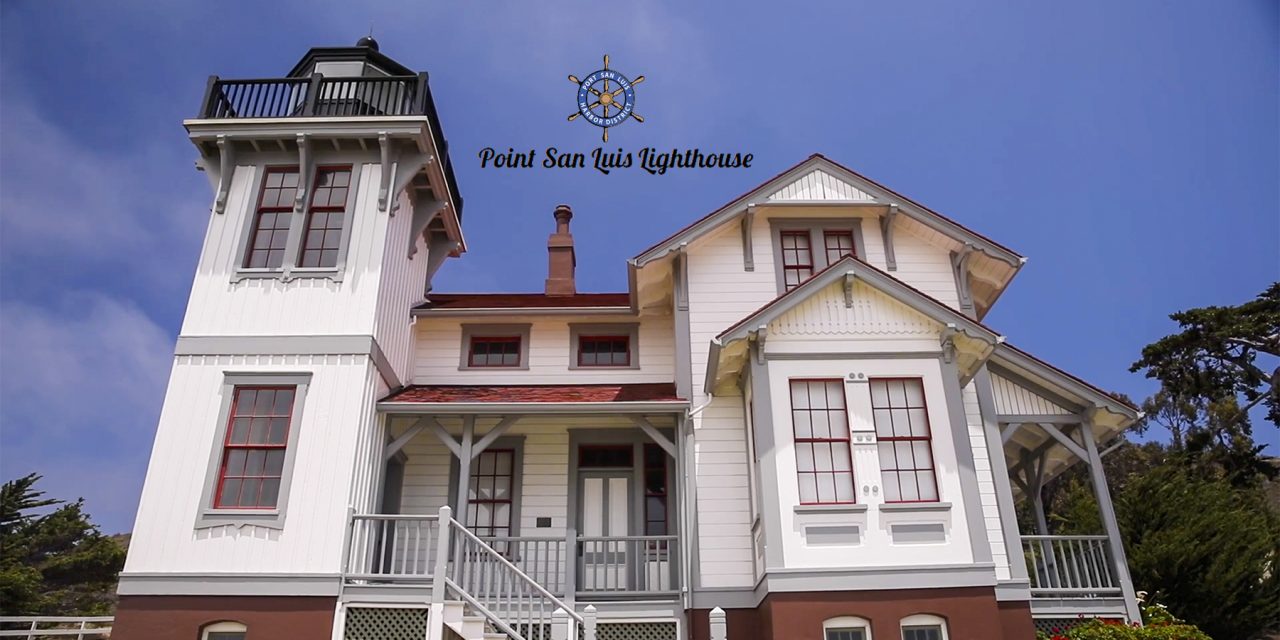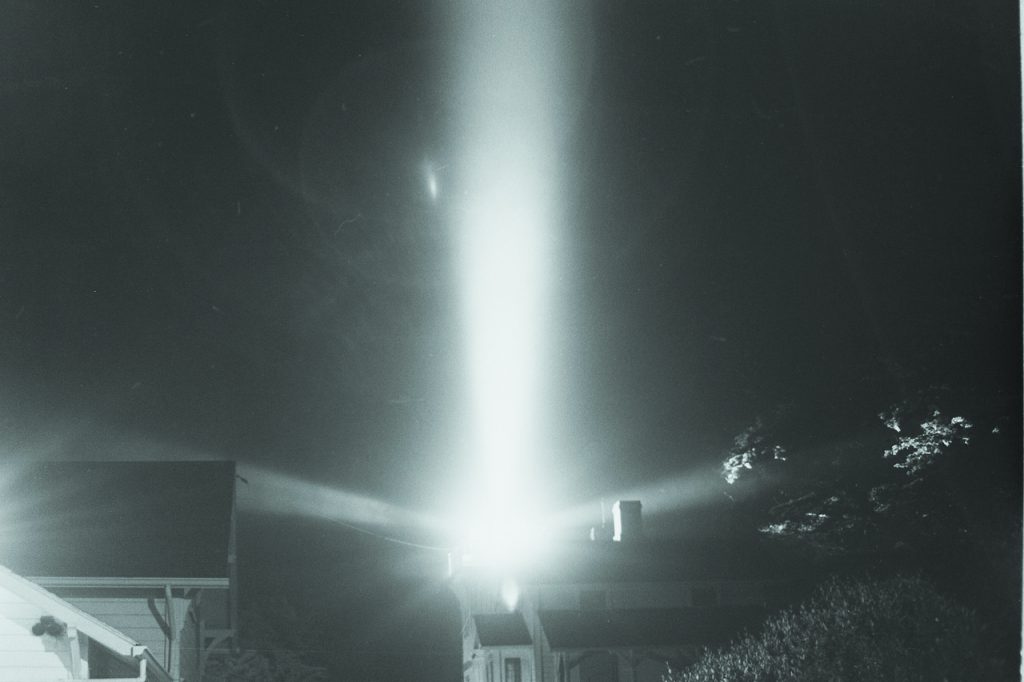After forty-five years of doing without, electricity finally came to the light station in 1935. On April 3 of that year, the San Luis Obispo Daily Telegram announced that the Midland Counties Public Services Corporation was stringing a new electric line from Harford pier—referred to at the time as the Pacific Coast Railway pier—across the hills to Point San Luis. The paper reported that it was the “most unique job” the company had ever attempted and that, for the first time in its history, crews were “installing a power system by water,” hauling poles and other equipment across San Luis Bay by boat and raft.
Beginning at the site of the old Marre hotel, 17 poles will be installed across a more than a half-mile stretch of country in order that [the] lighthouse may be linked with a modern power system…Diesel engines, which now provide power for the lighthouse, will be discarded, as will the old kerosene light…The new electric light…will send out more powerful beams, and penetration of fog signals will be increased…
[The] course of the electric line is following closely the foot trail which extends over the hill between the P.C. pier [and the light station] in order to facilitate patrol work and maintenance of the system…
Because there is no road leading to [the lighthouse]…crews board their launch at the county pier in Avila each morning…and are carried across the bay to the construction site. One team of horses was taken over the foot trail, but the greater part of the equipment is towed by raft. The men are working towards each other from the P.C. pier and from the lighthouse…
How delightful this transition to the modern world must have been for the eight light station residents: head keeper Fred Saunders and the Bob Moorefield and Elmer Gross families.
Right: Early 20th century photo of the Pacific Coast Railway pier with the Hotel Marre at the land end of the pier. The hotel burned to the ground in 1934. In its heyday it was a popular seaside resort catering to steamship passengers laying over at Port San Luis. Photo courtesy MOHAI collection, Seattle, WA
The Residents
Fred Saunders, the light station’s only bachelor keeper, had transferred from Punta Gorda in 1929 and lived alone in the head keeper’s dwelling. Assistant keeper Bob Moorefield had transferred from the Alcatraz light in 1926, bringing his three-year-old son John Robert “Sonny” Moorefield, Jr., and lived in one side of the Victorian duplex (demolished in 1960). In 1929, keeper Moorefield married Elizabeth Studle, who moved to the light station from San Luis Obispo, bringing her daughter Lucy. Assistant keeper Elmer Gross arrived in 1933 from Point Sur and lived in the other side of the duplex with his wife Lucille and son Burton.
The Old Hotel
In September 1934, the old Marre hotel in Port San Luis burned to the ground. It was empty at the time, having gone out of business many years earlier. In its heyday, it was a popular seaside resort hotel catering to steamship passengers laying over at the port. Originally the Ocean Hotel, its name was changed to the Hotel Marre when it was purchased in 1882 by cattle rancher Luigi Marre who bought the land surrounding the light station that same year.
The Road
As the Tribune article pointed out, at the time, there was no road to the light station; cars owned by keepers were kept in Avila. The only practical access to the station was by water, although there was the rough “foot trail” the article mentioned. Hikers to the lighthouse could use the trail, and the lighthouse children took it to get to and from the Port school, dodging cattle and, in hot weather, rattlesnakes.
Lighthouse Road—the road leading up to the light station from just inside the entrance to the Diablo Canyon nuclear power plant—wasn’t carved out until the early 1960s, finally constructed by the Coast Guard after years of negotiations with the landowners over whose property the road was laid. As part of the deal, the Coast Guard had to agree to restrict the use of the road to Coast Guard employees, the “bona fide” guests of its employees, and persons directly connected with the activities of the Coast Guard at the light station. The road is now controlled by PG&E and is not open to the public.
The Light
Of course, moving from kerosene to electricity provided benefits to mariners as well as those in residence. The kerosene lamp which had illuminated the lighthouse tower’s fourth-order Fresnel lens was replaced by a 500-watt lamp with clear incandescent bulbs. There were always two bulbs in case one burned out. The electric lamp had more illuminating power so that it could be seen by ships further out at sea.
Right: Undated photo of Fred Saunders in front of the Keeper’s residence at Point San Luis. Photo courtesy of Point San Luis Light Station archives
To learn more about the Point San Luis light station and its history, hike to the lighthouse with a PG&E docent or sign up for a van tour. Or take a virtual tour. Go to pointsanluislighthouse.org/ for more information or call (805)540-5771.










